The digitization of health services implies important cultural changes for both health personnel and the population in general. These eight guiding principles are aimed at guiding the countries of the Region of the Americas in the processes of digital health transformation. Their purpose is to support them in making informed decisions, formulating short and long-term goals, and developing solid and sustainable public policies, leaving no one behind.
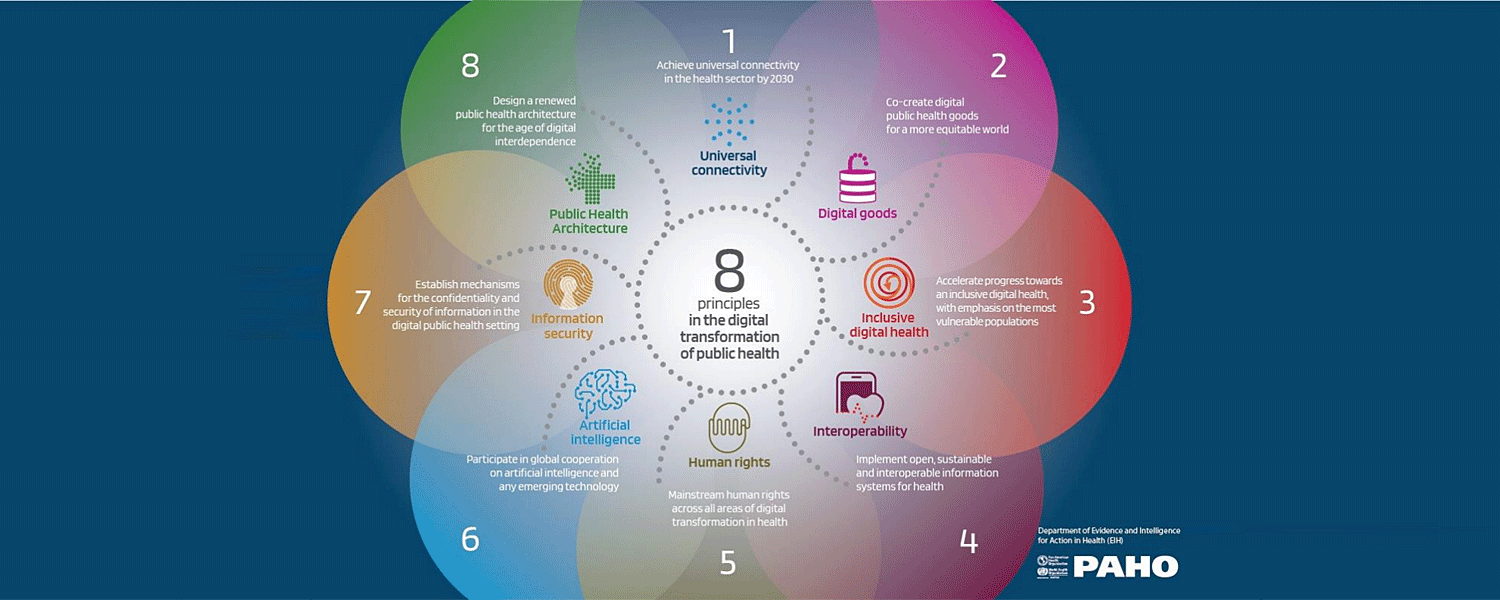
 Initiatives to position the health sector in the era of digital interdependence must be channeled into solid and sustainable policies that achieve full understanding and consideration of its characteristics and that address the needs and challenges of both individuals and communities, as well as of service providers. The benefits of considering connectivity and bandwidth as a new social determinant of health must also be taken into account.
Initiatives to position the health sector in the era of digital interdependence must be channeled into solid and sustainable policies that achieve full understanding and consideration of its characteristics and that address the needs and challenges of both individuals and communities, as well as of service providers. The benefits of considering connectivity and bandwidth as a new social determinant of health must also be taken into account.
 Digital public goods, to strengthen the health and well-being of the world\'s population, must include open source software, standards, algorithms, data, applications and content designed with the appropriate architecture and licensing. These attributes should allow scaling them in diverse populations and contexts, in addition to applying the appropriate local adaptations. Responsibility and sustainability will always prevail, thinking of a user-centered design, especially in vulnerable populations with special needs in terms of technology and digital literacy.
Digital public goods, to strengthen the health and well-being of the world\'s population, must include open source software, standards, algorithms, data, applications and content designed with the appropriate architecture and licensing. These attributes should allow scaling them in diverse populations and contexts, in addition to applying the appropriate local adaptations. Responsibility and sustainability will always prevail, thinking of a user-centered design, especially in vulnerable populations with special needs in terms of technology and digital literacy.
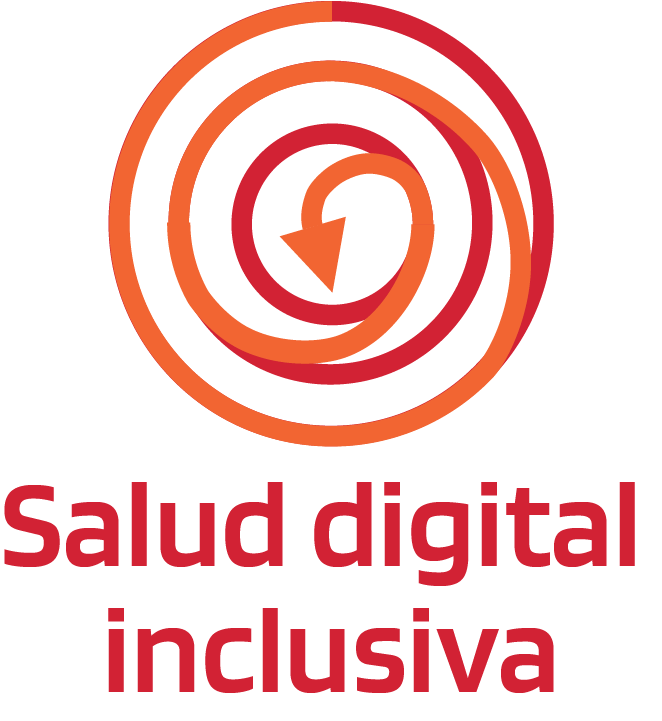 Leaving no one behind in the digital age requires not only reaching the most vulnerable populations, but also those people and population groups that are not digitally literate. ICTs have the potential to reduce health inequalities, by allowing people to access information and digital tools for prevention and care at the right time and in the right format. Digital inclusion implies appropriate access, digital skills, and usability and navigability aspects in the development of technological solutions. All this should encourage inclusion, but without ceasing to respect the autonomy of people and populations who decide not to use digital services.
Leaving no one behind in the digital age requires not only reaching the most vulnerable populations, but also those people and population groups that are not digitally literate. ICTs have the potential to reduce health inequalities, by allowing people to access information and digital tools for prevention and care at the right time and in the right format. Digital inclusion implies appropriate access, digital skills, and usability and navigability aspects in the development of technological solutions. All this should encourage inclusion, but without ceasing to respect the autonomy of people and populations who decide not to use digital services.
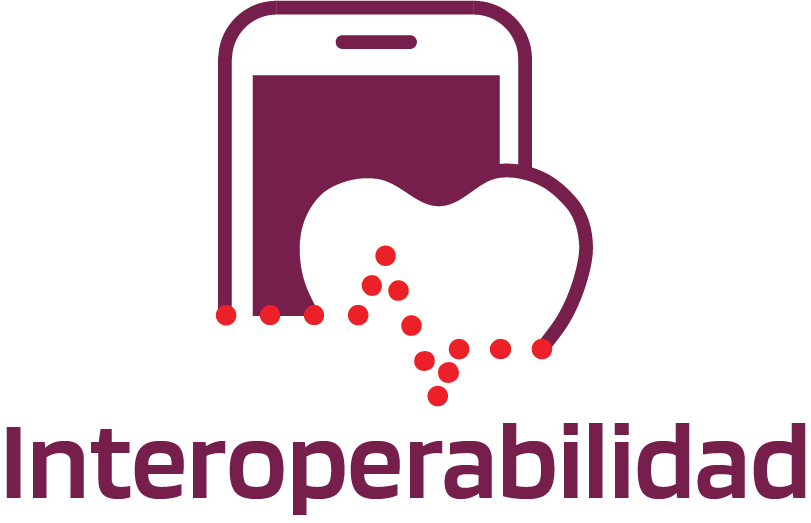 Information systems for health - timely and open access to properly disaggregated data, integration of national and local systems, digital health and ICT - facilitate effective identification, notification and analysis of cases and contacts, early search and detection of cases and the definition and monitoring of the population at risk, in a safe, interoperable and as personalized as possible way.
Information systems for health - timely and open access to properly disaggregated data, integration of national and local systems, digital health and ICT - facilitate effective identification, notification and analysis of cases and contacts, early search and detection of cases and the definition and monitoring of the population at risk, in a safe, interoperable and as personalized as possible way.
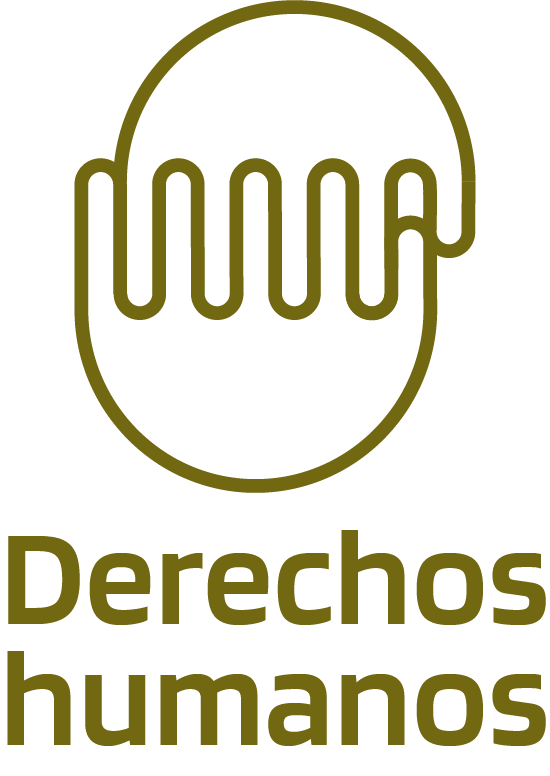 Ensuring the protection of human rights within digital health requires a thorough review of legal instruments related to the health sector. Human dignity, in its individual and social dimension, must be one of the fundamental values ??of this process, as is the environment where life develops. To be fair and equitable, the regulatory framework must be free of any geographic, educational, cultural, political, religious or gender bias.
Ensuring the protection of human rights within digital health requires a thorough review of legal instruments related to the health sector. Human dignity, in its individual and social dimension, must be one of the fundamental values ??of this process, as is the environment where life develops. To be fair and equitable, the regulatory framework must be free of any geographic, educational, cultural, political, religious or gender bias.
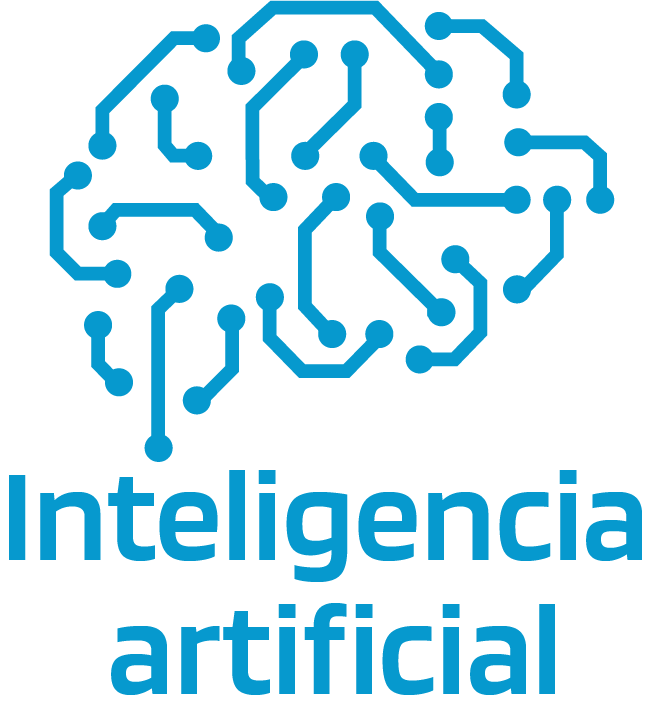 Global cooperation in artificial intelligence implies understanding the individual and social dimension in a globalized and interconnected reality that belongs to the human condition. Such cooperation, as well as working in multisectoral and interdisciplinary networks, is vital when designing and adopting artificial intelligence solutions that promote equity, gender and cultural diversity approaches with safe, reliable and open algorithms.
Global cooperation in artificial intelligence implies understanding the individual and social dimension in a globalized and interconnected reality that belongs to the human condition. Such cooperation, as well as working in multisectoral and interdisciplinary networks, is vital when designing and adopting artificial intelligence solutions that promote equity, gender and cultural diversity approaches with safe, reliable and open algorithms.
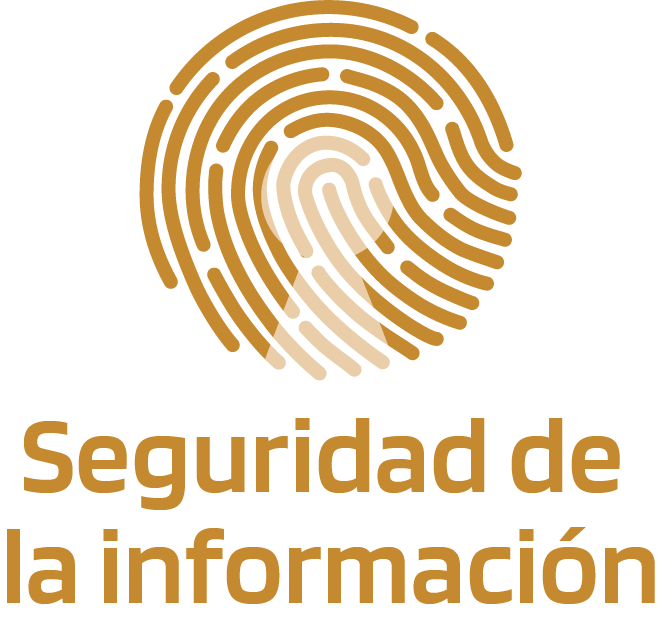 Adopt regulatory instruments on the treatment and protection of sensitive health data, as well as international security guidelines and standards for patient-centered information systems. These systems must be implemented respecting health-related rights, in order to generate a “culture of safe and reliable data management”, understood as the balance between the need to access data and privacy.
Adopt regulatory instruments on the treatment and protection of sensitive health data, as well as international security guidelines and standards for patient-centered information systems. These systems must be implemented respecting health-related rights, in order to generate a “culture of safe and reliable data management”, understood as the balance between the need to access data and privacy.
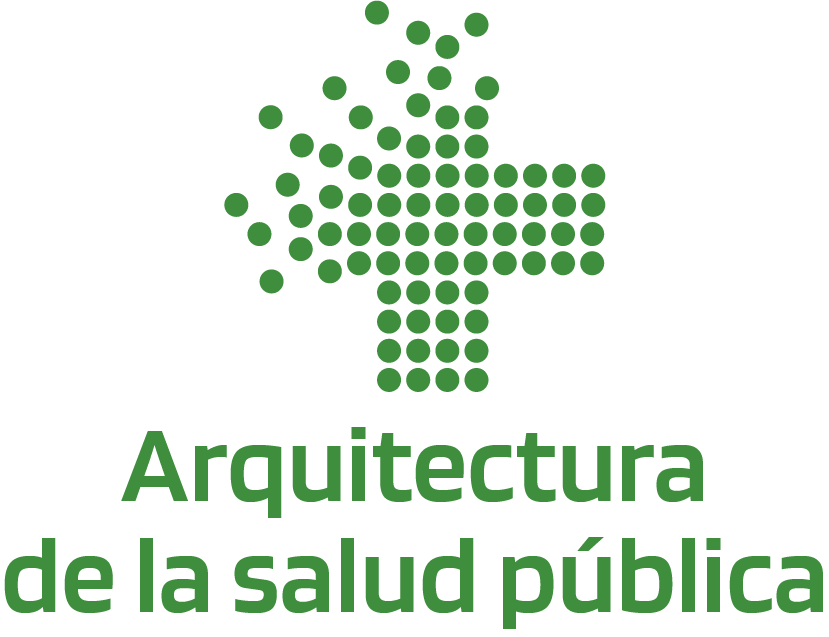 Public health architecture, in the era of digital interdependence, must be framed within the government\'s digital agenda. It must be transversal, to articulate the different aspects of governance and optimize strategic planning and resource management. It should be based on the use of norms and procedures in favor of multiple areas, not only the health sphere; This is the case of connectivity and bandwidth, which interchangeably influence health, education and all sectors of a modern society.
Public health architecture, in the era of digital interdependence, must be framed within the government\'s digital agenda. It must be transversal, to articulate the different aspects of governance and optimize strategic planning and resource management. It should be based on the use of norms and procedures in favor of multiple areas, not only the health sphere; This is the case of connectivity and bandwidth, which interchangeably influence health, education and all sectors of a modern society.
Download 8 Guiding Principles for Digital Transformation of the Health Sector: A Call to Action in the Americas in PDF from PAHO's Digital Library.
References
- 1. Agency for Healthcare Research and Quality. Informing Improvement in Care Quality, Safety, and Efficiency [Internet]. Digital Healthcare Research - Archive. [cited 2021 May 2]. Available from: https://digital.ahrq.gov/key-topics/architecture-health-it
- 2. Albright B. The power of EMPI. Health systems are tapping the value of EMPIs to eliminate duplicate patient records. Healthc Inform [Internet]. 2008 Apr [cited 2021 May 2];25(4):28–30. Available from: https://pubmed.ncbi.nlm.nih.gov/18512588/
- 3. Banco Interamericano de Desarrollo (BID). Código para el Desarrollo [Internet]. BID - Software abierto para gobiernos y ciudadanos. [cited 2021 May 2]. Available from: https://code.iadb.org/es
- 4. Beech M. Confidentiality in health care: conflicting legal and ethical issues. Nurs Stand [Internet]. 2007 Jan 31 [cited 2021 May 2];21(21):42–6. Available from: https://pubmed.ncbi.nlm.nih.gov/17305035/
- 5. Beyleveld D, Townend DMR. When is personal data rendered anonymous? Interpreting recital 26 of Directive 95/46/EC. Med Law Int. 2004 Feb;6(2):73–86.
- 6. Commission Nationale de l’Informatique et des Libertés (CNIL) F, European Data Protection Supervisor (EDPS) EU, Garante per la protezione dei dati personali I. Declaration on Ethics and Data Protection in Artificial Intelligence - 40th International Conference of Data Protection and Privacy Commissioners. Brussels; 2018 Oct.
- 7. Deloitte UK. Digital transformation: Shaping the future of European healthcare [Internet]. 2020 Sep [cited 2021 May 2]. Available from: https://www2.deloitte.com/uk/en/pages/life-sciences-and-healthcare/articles/european-digital-health.html
- 8. COVID-19 Information Systems and Digital Health: After-Action Review of the First 100 Days in Quarantine [Internet]. 2020 [cited 2021 May 2]. Available from: https://iris.paho.org/handle/10665.2/52439
- 9. EuroHealthNet (European Partnership for Improving Health E and W. Response to the draft WHO Global Strategy on Digital Health 2020 [Internet]. [cited 2021 May 2]. Available from: https://eurohealthnet.eu/
- 10. EUROPEAN COMMISSION DG, Communications Networks, Content & Technology. Shaping the digital transformation in Europe [Internet]. 2020 Sep [cited 2021 May 2]. Available from: https://digital-strategy.ec.europa.eu/en/library/shaping-digital-transformation-europe
- 11. Expert Panel on effective ways of investing in Health (EXPH). ASSESSING THE IMPACT OF DIGITAL TRANSFORMATION OF HEALTH SERVICES [Internet]. Luxembourg; 2019 [cited 2021 May 2]. Available from: http://ec.europa.eu/dgs/health_food-safety/index_en.htm
- 12. GSMA - Intelligente. La Economía Móvil en América Latina 2020 [Internet]. 2020 [cited 2021 May 2]. Available from: https://www.gsmaintelligence.com/
- 13. International Telecommunication Union. Statistics [Internet]. 2019 [cited 2021 Apr 19]. Available from: https://www.itu.int/en/ITU-D/Statistics/Pages/stat/default.aspx
- 14. International Telecommunication Union (ITU). Connecting humanity Assessing investment needs of connecting humanity to the Internet by 2030 [Internet]. 2020 Aug [cited 2021 Apr 19]. Available from: https://www.itu.int/en/myitu/Publications/2020/08/31/08/38/Connecting-Humanity
- 15. ITU. Nuevos datos de la UIT indican que, pese a la mayor implantación de Internet la brecha de género digital sigue creciendo. 2019 Nov 5 [cited 2021 Apr 29]; Available from: https://www.itu.int/es/mediacentre/Pages/2019-PR19.aspx
- 16. NU. CEPAL. Datos, algoritmos y políticas: la redefinición del mundo digital [Internet]. Comisión Económica para América Latina y el Caribe. 2018 [cited 2021 May 2]. Available from: https://repositorio.cepal.org/handle/11362/43477
- 17. Poushter J. Internet access grows worldwide but remains higher in advanced economies. [Internet]. Pew Research Center. 2016 [cited 2021 May 2]. Available from: https://www.pewresearch.org/global/2016/02/22/internet-access-growing-worldwide-but-remains-higher-in-advanced-economies/
- 18. Ríos AM. Telemedicine market value in Latin America from 2020 to 2025 [Internet]. 2021 Feb [cited 2021 May 2]. Available from: https://www.statista.com/statistics/800293/telemedicine-market-value-latin-america/
- 19. Ritchie H, Roser M. Technology Adoption. Our World Data [Internet]. 2017 Oct 2 [cited 2021 Apr 19]; Available from: https://ourworldindata.org/technology-adoption
- 20. Telecom Advisory Services L. Hacia la transformación digital de América Latina y el Caribe: El Observatorio CAF del Ecosistema Digital. 2017.
- 21. United Nations. Roadmap for Digital Cooperation. 2020 Jun.
- 22. USAID. A VISION FOR ACTION IN DIGITAL HEALTH 2020-2024. Accelerating the Journey to Self-Reliance Through Strategic Investments in Digital Technologies. 2020.
- 23. World Economic Forum. Digital Transformation: Powering the Great Reset. 2020 Jul.
- 24. World Health Organization (WHO). Digital Health [Internet]. 2021 [cited 2021 May 2]. Available from: https://www.who.int/health-topics/digital-health#tab=tab_1
